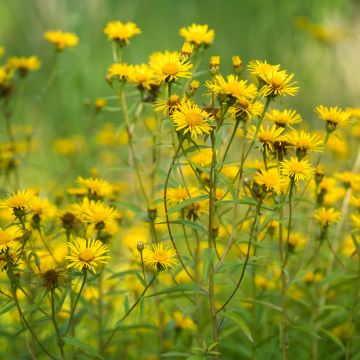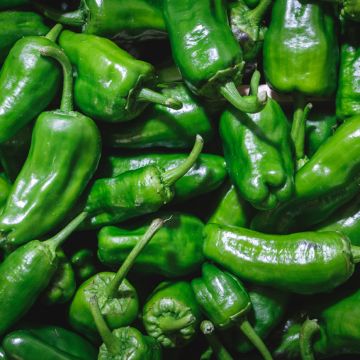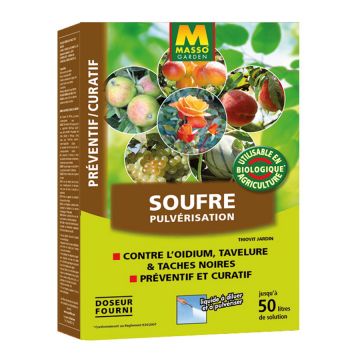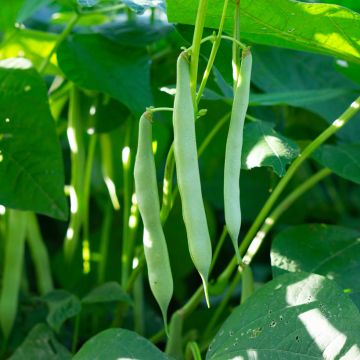
Simplifying Life in the Vegetable Garden: Our Tips
How to minimise effort in the vegetable garden
Contents
Spring is well established, summer is on the horizon, and the sun’s rays are getting warmer, inviting you to relax in a deck chair. At the same time, you hear the call of the vegetable garden… the time for weeding, hoeing, sowing, planting, watering… and soon harvesting has come. No need to procrastinate; you’ll need to get going if you want to achieve generous harvests of beautiful and delicious vegetables.
However, the vegetable garden is not solely the domain of the brave, the tireless worker, or the hyperactive. Even if you are a fan of laziness and carpe diem, you can still cultivate your garden. Gently and without too much effort, it goes without saying! Provided you apply alternatives, tips, and gardening techniques that will simplify your life in the vegetable garden. I’ll explain everything, with full knowledge of the subject!
Make soil preparation and maintenance easier
If there’s one task in the vegetable garden that is arduous and tiring, it’s preparing and maintaining the soil. However, you know that good soil is synonymous with good crops, and working it is one of the keys to your garden’s success. Yet, the mere thought of digging, hoeing, and weeding exhausts you…
There are other alternatives that are simpler to implement, less time-consuming, and above all, less exhausting.
Choosing the Right Tools
Of course, I could explain to you what the essential tools are for any respectable gardener. But Virginie T. has already done that, and I invite you to read her article on the 8 essential tools for the vegetable garden.
Instead, I will talk about the tools that simplify our lives in the garden and make work easier. Starting with the broadfork, this famous bio fork, invented by Mr. Grelin in the 1960s, is ideal for ecological gardens, as it allows you to turn the soil on the surface, decompact and loosen the soil, aerate it, and remove adventives while respecting the microorganisms and microfauna of the soil. This tool, which has between 2 and 7 tines, thus replaces deep digging, limiting effort and especially back pain. Admittedly, this tool has a cost, but it is an investment in your well-being and that of your soil.
In the realm of tools that simplify gardening, the hand hoe is also quite handy, as it is completely versatile. It allows you to hoe, weed, and cultivate, create furrows, mound, or scratch the soil. A lightweight tool that fits well in hand. Olivier explains everything about the use of the hand hoe.
To make sowing easier, small seeders are essential. They help lighten the chore of thinning seedlings. On another note, the wheelbarrow is also indispensable, as it allows you to transport heavy loads, such as bags of potting soil, your compost, manure, pots…
Personally, as a somewhat forgetful gardener, I also really appreciate the garden apron with multiple pockets or the accessory belt that save a lot of trips back and forth to the shed.
Mulching Everywhere
We can never say it enough, the vegetable garden benefits from being mulched. And so do you, as the advantages are numerous:
- limiting evaporation = less watering
- reducing erosion = fewer hoeing sessions
- reducing adventives = less weeding
- providing nutrients = less compost or manure to spread
For the vegetable garden, we recommend installing a commercial organic mulch (RCW/cocoa shells and bark/buckwheat husks/flax flakes, miscanthus or hemp) or homemade (dry grass clippings mixed with a bit of straw/more or less mature compost/thick layer of hay/shredded branches from trees or bushes…) which may need to be renewed throughout the year.
 Choosing the right tools and mulching allows any gardener to simplify their life
Choosing the right tools and mulching allows any gardener to simplify their life
Covering the Soil in Autumn
When the summer harvests are finished, the vegetable garden inevitably empties. However, on bare soil, adventives will quickly become invasive, even during winter. And, when spring returns, the work of preparing the soil will be multiplied.
So, in winter, to make your life as a gardener easier, lay down raw cardboard, free of printed inscriptions, and slightly moistened on the soil to prevent erosion from the impact of the weather and the growth of adventives. You can cover it with fallen leaves or grass clippings. Everything will decompose in about three months. And your vegetable garden will be “clean” come spring.
When sowing and planting is effortless
Once the soil is ready, it’s time to sow or plant. And again, you can save yourself some effort by using tips to spend less time with your hands in the soil.
Sand, a great ally
Anyone who has ever sown seeds knows how difficult it is to do so evenly. Thus, to sow less densely and therefore avoid the thinning stage, it is recommended to mix sand with the seeds. This is very effective for tiny seeds like those of radishes, carrots, or turnips. This tip is a good workaround for those who tend to sow too thickly.
Opt for reliable choices
To make life easier in the vegetable garden, the simplest approach is to start growing vegetables considered reliable, those that grow (almost) on their own, quickly, and are less prone to diseases. Radishes and salads top the list, closely followed by potatoes, peas, and green beans, spinach and chard, leeks, squashes, and pumpkins, not to mention tomatoes and courgettes. With these vegetables, you can already treat yourself.
Almost eternal vegetables
In addition to this list, there are also perennial vegetables that regrow or reseed themselves year after year, without your intervention. These perennial vegetable plants remain in place for 4 or 5 years, are not afraid of cold or heat, and are not particularly susceptible to diseases or pests. In short, urgently adopt these perennial vegetables such as rocambole garlic and rocambole onion, perpetual leek, good-Henry goosefoot, cardoon, and many others that Ingrid presents in her article: 10 perennial or vivacious vegetables for a sustainable and self-sufficient vegetable garden.

Chard, spinach, squashes, and pumpkins belong to the category of easy-to-grow vegetables; cardoon and rocambole garlic are perennial vegetables.
Vegetables in good company
Finally, sowing or planting vegetables by affinity is an effective way to simplify gardening. Indeed, by associating certain vegetables with others, you will occupy more space, allow plants to mutually protect each other against diseases and pests or excessive heat, and even increase your yield. For example, you can sow radishes and carrots together, which grow at different rates, transplant salads between cabbages, associate carrots and onions to repel their respective flies, or even grow your tomatoes or courgettes in the plot that previously hosted peas, whose root nodosities capture nitrogen from the air and release it in small quantities. I explain everything in my article on using legumes to improve your vegetable garden’s soil.
Discover other Vegetable gardens
View all →Available in 0 sizes
Available in 1 sizes
Available in 1 sizes
Available in 1 sizes
Available in 1 sizes
Available in 1 sizes

Available in 1 sizes
Available in 1 sizes
Available in 1 sizes
Available in 1 sizes
Watering yes, but as simply as possible.
Watering is often seen as a chore in the vegetable garden, especially if you do it with a watering can. Of course, if you have mulched your plots, the task will be lighter, but in the midst of increasingly hot summers, it is necessary to provide water.
The most practical and economical solution remains a rainwater harvesting tank or cistern. To make your life easier, consider installing it as close as possible to your vegetable garden to shorten the trips with your watering cans held at arm’s length. I remind you that it is preferable to water in the late afternoon or early morning, taking care not to wet the foliage. This is to avoid the development of fungal diseases.

The rainwater collector connected to the microporous hose helps lighten the watering chore
On this note, to enjoy your deck chair or hammock a little longer, connect a microporous hose system to the tap of your rainwater collector that provides regular and precise watering, directly at the base of the crops. This hose has the advantage of weaving its way everywhere over a long distance. Connected to a tank, the hose will not have too much pressure and will diffuse water in a drip system. The only condition is to elevate, for example on breeze blocks, your rainwater harvesting tank, which must be above the level of the vegetable garden.
Harvest without bending the neck.
How low the ground is!” Who hasn’t thought this while harvesting their beans or strawberries? And your back won’t disagree!
To make your life easier in the vegetable garden, why not grow vertically? Of course, you won’t be able to grow all vegetables on a trellis, wall, or special structure, but some adapt perfectly to these growing conditions.
So, on tipis, stakes, bamboo, or even trellises, let climbing beans or Spanish beans, peas, or even certain courgettes, melons or squashes, and cucumbers climb… Without direct contact with the moisture of the soil, these vegetables will thrive even better. And so will you!

Climbing vegetables, gutters, and pallets allow for vertical gardening
For a vertical vegetable garden, other solutions are possible, to be set up on an unsightly wall of the house, on the facade of the garden shed, or on a sturdy fence:
- the pallet in which you will create compartments with geotextile felt
- perforated gutters filled with soil to grow salads, radishes, or strawberries
- suspension fabrics, similar to living walls, to grow a few plants of strawberries, salads, or herbs.
- Subscribe!
- Contents









































Comments